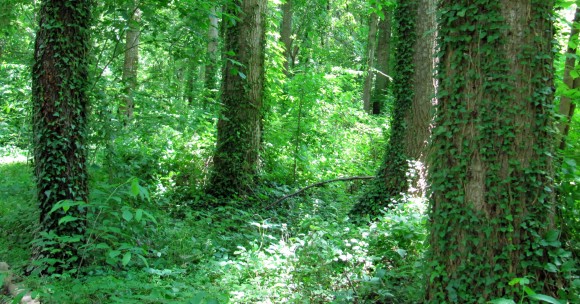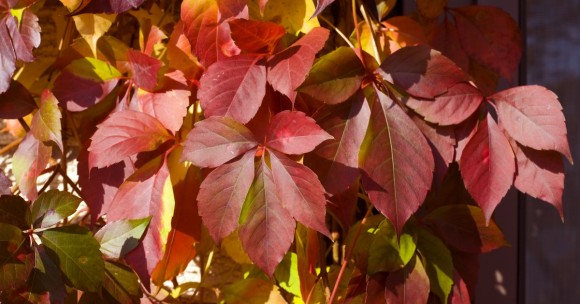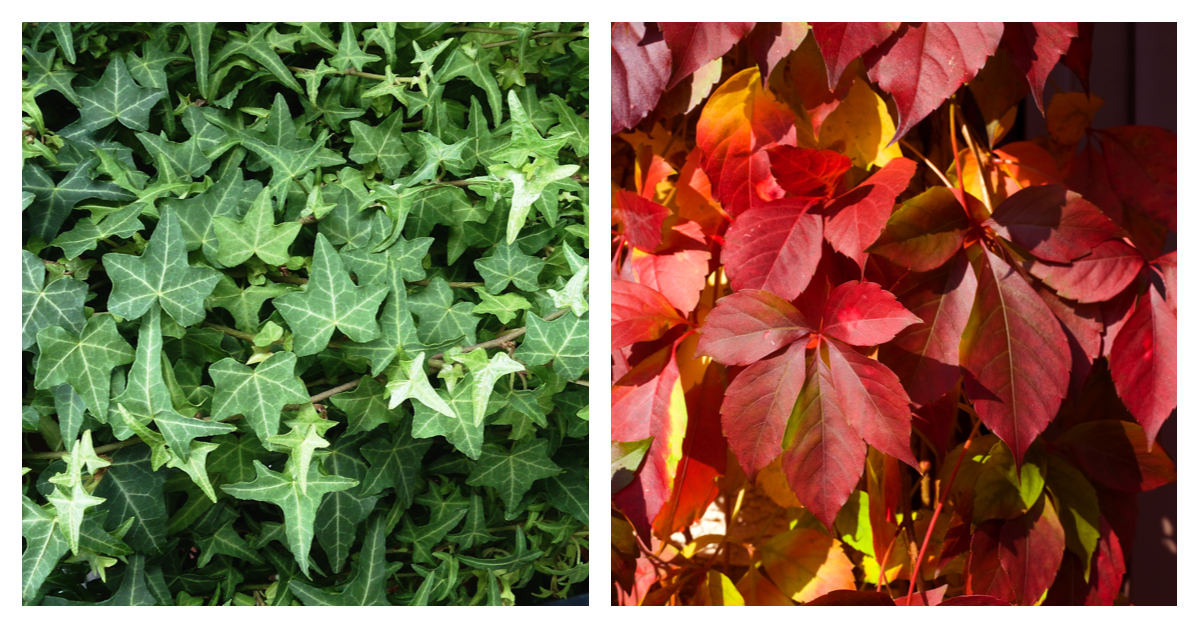Invasive Plant to Avoid: English Ivy
This week is National Invasive Species Awareness Week. Herring Run Nursery will be focusing each day on one invasive plant and a native alternative.
Don’t Plant: English Ivy

Few invasive plants are as lovingly embraced by unsuspecting homeowners as English ivy (Hedera helix) and other non-native Hedera species.
English ivy is an evergreen vine that spreads across ground and climbs trees. Because it is fast growing, landscape designers often encourage its use as a groundcover. This vigor tends to result in monocultural stands, which exclude native plants. It spreads into forested areas, especially at forest edges, damaging and killing trees.
Trees weakened by ivy infestations are more likely to succumb to disease, and the weight of the vines makes trees more likely to be damaged by wind, ice, and snow.
English ivy should be removed from your property wherever you find it.
Native Alternative: Golden Ragwort or Virginia Creeper
Thankfully, there are many great native plants that can be used instead of English ivy.

As a groundcover, we are big fans of golden ragwort (Senecio aureus). This evergreen flower in the aster family offers dense foliage and, in the spring, tall stalks of yellow flowers. Golden ragwort grows well in most garden conditions, from shade to sun.

Native vines, like Virginia creeper (Parthenocissus quinquefolia, pictured) and coral honeysuckle (Lonicera sempervirens) are great plants for wildlife and are not invasive. Virginia creeper will climb trees but is not harmful to them.
Herring Run Nursery offers all three of these native species, and will open its Spring season on April 9th.


